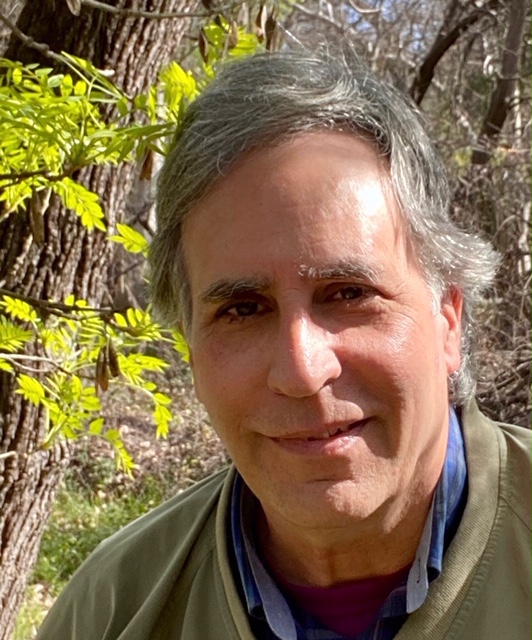Attachment and Meditation
Martin LeFevre
*******
Meditation cannot truly begin until the mind/brain lets go of everything. No trick or technique can cause it to do so. Only undivided observation loosens the bonds and ends the grooves of thought.
Why is it so difficult to let go? What is it about the human mind that keeps us attached to beliefs, people, and problems? It appears as though the brain, using thought, is almost wired to attach itself to things. Obviously attachment is a function of the self. As long as there is the emotionally held idea of a separate self, there will be attachment with all its problems.
At bottom, there is a seemingly separate self that experiences things as happening to it. Experience isn’t perceived as an unbroken flow of inner and outer movement. Rather, we experience things from a center that is more or less fixed, a center that interprets, judges, evaluates, and then acts. But in actuality, is there a separate entity that stands apart from anything?
If there is no sense of self, there is no basis for attachment. Therefore attachment is a function of the ‘me,’ the ego, the self at the center of our experience.
The expression, ‘my thoughts’ is not merely redundant; it is existentially and neurologically erroneous. And yet the ‘me’ seems to have tremendous validity. Why does the brain, using thought, fabricate a separate self, and hold onto it for dear life, when a separate self doesn’t actually exist?
There are at least two possibilities. One is that, in the absence of insight into the nature of thought, the mechanism of a separate self appears to be necessary to bring some semblance of order and stability to the chaos of thought. In other words, the brain stores experience, and a program called ‘me’ makes sense of all the information.
Another possibility is that as humans evolved conscious thought, the survival mechanism became deeply linked to concepts of identity. Instead of realizing that ‘I am my thoughts,’ and ‘thought is not actuality,’ there was the subconscious and emotionally held idea that ‘I am not my thoughts, but a separate and permanent entity.’
From this psychological basis, the idea of permanence, and the fear of death, are inevitable. Separate selfhood, survival, attachment, permanence, and fear of death got mixed up together, and formed the psychological basis of humanness.
But thought-dominated consciousness has become utterly dysfunctional, both individually and collectively. Authentic meditation ushers in another type of consciousness altogether.
To awaken meditation, one has to begin with division in observation. That is, with negating the illusory observer or watcher. If one doesn’t think in terms of ‘my mind’ (which reinforces division in observation) one begins to observe the movement of thought as it is —as a single movement of nearly nonstop associations.
Thought is a single stream, which habitually tends to separate itself from nature, the world, and itself. Sitting quietly and still, ask oneself, ‘is the observer operating?’ In doing so, in passively watching the mind divide itself from itself, one brings attention to the infinite regression of psychological separation, and it ceases. When the habit and sense of separateness ends, thought naturally falls silent. That is meditation.
It’s near dusk, and the parkland is teeming with Cooper’s hawks. A large, brown, stipple-winged hawk takes off from the path ahead of me with some small animal in its mouth.
Another, perched on a branch overhanging the park road, drops from the limb and screeches incessantly as it glides in a straight, level flight path down the road. A few minutes later, a couple walking ahead of me stop and turn around to watch a raptor alight high in a sycamore tree.
For the last 20 minutes of a sitting by the stream, a gray squirrel chatters away in a tree behind me. It occurs to me that consciousness is like that squirrel prattling on, impervious to awareness.
As if to confirm that insight, a hundred meters up the path I pass two college-age couples talking non-stop as they imbibe at a picnic site adjacent to the footbridge. In the time it takes me to go by, one of the young women changes subjects about shopping three times, without appearing to take a breath.
Then, to complete the comic play of the chattering squirrel and girl, four small boys on bikes go by, two of them still in training wheels. They shout and make meaningless verbal noises without pause, and seemingly without point, the way little boys do. Their non-stop sound effects serve a purpose however. To their minds, any silence breaks the bond between them.
Being creatures of thought,
we fear any break in thought, because thought provides the
basis and bonds of our lives. It’s not only a baseless fear
however; it’s an increasingly catastrophic one. Is
transformation is in the air?
ENDS



 Eugene Doyle: The West’s War On Iran
Eugene Doyle: The West’s War On Iran Richard S. Ehrlich: Deadly Border Feud Between Thailand & Cambodia
Richard S. Ehrlich: Deadly Border Feud Between Thailand & Cambodia Gordon Campbell: On Free Speech And Anti-Semitism
Gordon Campbell: On Free Speech And Anti-Semitism Ian Powell: The Disgrace Of The Hospice Care Funding Scandal
Ian Powell: The Disgrace Of The Hospice Care Funding Scandal Binoy Kampmark: Catching Israel Out - Gaza And The Madleen “Selfie” Protest
Binoy Kampmark: Catching Israel Out - Gaza And The Madleen “Selfie” Protest Ramzy Baroud: Gaza's 'Humanitarian' Façade - A Deceptive Ploy Unravels
Ramzy Baroud: Gaza's 'Humanitarian' Façade - A Deceptive Ploy Unravels